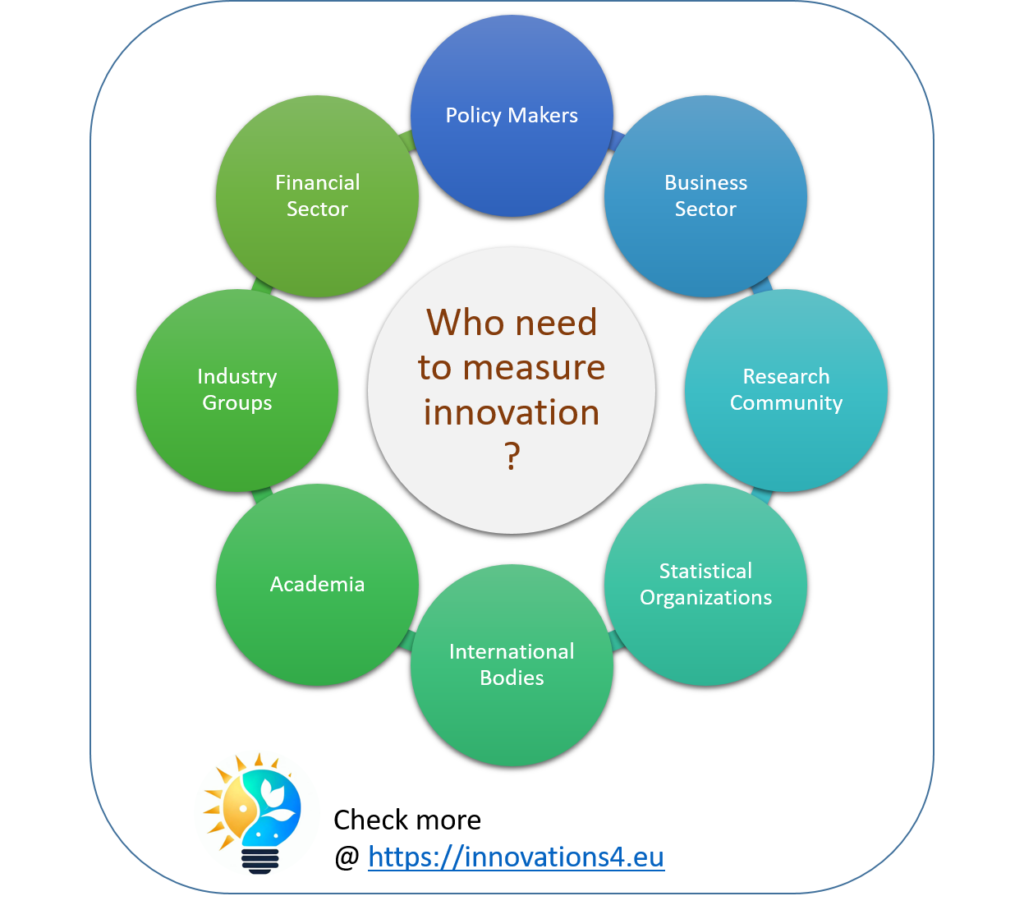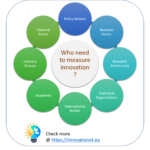
The Oslo Manual, the international reference guide for innovation data collection, identifies eight key players who each bring unique perspectives and needs to the innovation measurement landscape.
From policy makers shaping national strategies to financial institutions funding the next big breakthrough, these stakeholders work together to create a comprehensive understanding of innovation dynamics.
Key Players in Innovation Measurement
Key Players in Innovation Measurement
🏛️Policy Makers
- National governments
- Regional authorities
- Economic development agencies
- Public funding bodies
💼Business Sector
- Corporate executives
- Innovation managers
- R&D departments
- Strategy teams
🔬Research Community
- Universities
- Think tanks
- Research institutes
- Innovation labs
📊Statistical Organizations
- National statistics offices
- Data collection agencies
- Economic research units
- Survey organizations
🌐International Bodies
- OECD
- European Union
- World Bank
- UNESCO
🎓Academia
- Business schools
- Engineering departments
- Economics faculties
- Research centers
🤝Industry Groups
- Trade associations
- Chambers of commerce
- Professional networks
- Sector consortiums
💰Financial Sector
- Investment banks
- Venture capital firms
- Development banks
- Innovation funds
Policy Makers
Driving National Innovation Agendas
Policy makers stand at the forefront of innovation measurement as they shape national strategies and allocate resources. They rely on innovation data to make informed decisions about funding, regulations, and support programs. This data helps them understand their country’s competitive position, identify gaps in the innovation ecosystem, and design effective policies to boost economic growth.
Business Sector
Turning Innovation into Value
The business sector represents the primary engine of innovation implementation. Companies need innovation metrics to track their performance, understand market positions, and make strategic decisions. These measurements help them identify opportunities, allocate resources efficiently, and evaluate the success of their innovation initiatives in comparison to competitors.
Research Community
Advancing Innovation Knowledge
Research organizations serve as the intellectual backbone of innovation measurement. They develop new methodologies, study innovation patterns, and analyze the relationships between different factors affecting innovation. Their work provides crucial insights that help refine measurement approaches and deepen our understanding of innovation dynamics.
Statistical Organizations
Creating Reliable Data Foundations
Statistical organizations play a vital role in collecting, processing, and maintaining innovation data. They ensure the quality and consistency of innovation measurements through standardized methodologies. Their work provides the reliable data infrastructure that other stakeholders depend on for their analysis and decision-making.
International Bodies
Setting Global Standards
International organizations coordinate innovation measurement efforts across borders. They develop standardized frameworks, facilitate knowledge sharing between countries, and enable meaningful international comparisons. Their work helps identify global trends and best practices in innovation policy and measurement.
Academia
Building Innovation Knowledge Base
Academic institutions contribute to both theoretical and practical aspects of innovation measurement. They train future innovation leaders, conduct research on measurement methodologies, and collaborate with industry to bridge theory and practice. Their work helps advance our understanding of innovation processes and outcomes.
Industry Groups
Representing Sector Interests
Industry associations and networks provide sector-specific perspectives on innovation measurement. They help translate broad measurement frameworks into industry-relevant metrics and facilitate knowledge sharing among members. Their insights help ensure that innovation measurements reflect real-world business needs.
Financial Sector
Funding Innovation Growth
The financial sector uses innovation measurements to evaluate investment opportunities and risks. They rely on these metrics to make funding decisions, assess market potential, and track the performance of innovation-focused investments. Their perspective helps link innovation measurement to market value and economic outcomes.

